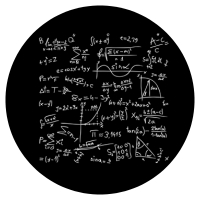
Looking to enhance your career as an electrician? Look no further! Our Maths for Electricians course is a must-have resource for electricians, trade professionals, trainees, and newcomers in the industry. It’s time to add this essential tool to your skill set.
Accessible online and compatible with PCs, MACs, and tablets, this bite-sized course offers convenience and flexibility. You can access it anytime, anywhere, fitting seamlessly into your busy schedule.
Once you complete the simple enrolment process, you’ll gain access to the comprehensive online course material within just 24 hours. No waiting around – dive right into the content and start mastering the mathematical skills required to excel as an electrician in various settings, be it domestic, industrial, or commercial.
Whether you’re a budding student or a seasoned electrician in need of a refresher, our Maths for Electricians course caters to all levels of expertise. Say goodbye to the myth of math being an insurmountable challenge. We believe that the mathematical concepts we employ as electricians are entirely manageable, and we’re here to prove it.
In our course, we apply these principles directly to our field of electrical work, bringing relevance and practicality to your learning experience. Think of it as applying everyday mathematical calculations to the world of electricians. Just as you calculate discounts or estimate travel time, you’ll now be equipped with the skills to perform precise calculations and measurements in your electrical tasks.
Starting from the basics, this course ensures accessibility for everyone, even if you don’t have a GCSE in maths. Feel free to breeze through the initial topics if they’re too easy for you, and delve straight into the more advanced lessons within the course. To reinforce your learning, each lesson includes practice questions that allow you to apply and solidify your newfound knowledge.
Don’t miss out on this opportunity to boost your mathematical prowess and advance your career as an electrician. Enroll today and gain the edge you need in the industry.
Let’s look at everyone’s favourite in this post…
Voltage drop refers to the decrease in voltage that occurs when current flows through a conductor, such as a wire or a circuit element. It is an important concept in electrical and electronic systems, as excessive voltage drop can lead to reduced performance, power loss, and even equipment failure.
When current passes through a conductor, it encounters resistance, which causes a voltage drop according to Ohm’s law. Ohm’s law states that the voltage drop (V) across a conductor is equal to the product of the current (I) flowing through it and the resistance (R) of the conductor, as expressed by the formula V = I × R.
The voltage drop can be calculated using this formula, but it’s important to note that it applies only to resistive elements in a circuit. In real-world applications, other factors can also contribute to voltage drop, such as the inductance and capacitance of components, impedance, and the length and thickness of the wire.
Voltage drop is typically unwanted in electrical systems because it can affect the performance and efficiency of devices. Excessive voltage drop can lead to a significant loss of power, reduced voltage levels at the load, increased heat generation, and even malfunctions of sensitive components.
To minimize voltage drop, it’s essential to consider factors such as the wire gauge (thickness), the length of the conductor, and the expected current load. Thicker wires with lower resistance can reduce voltage drop, and shorter conductor lengths can also help. Additionally, optimizing the design and layout of the circuit can minimize voltage drop by reducing the number of connections, using appropriate connectors, and minimizing the use of long, narrow traces on circuit boards.
To measure voltage drop, a voltmeter can be used to measure the voltage across a particular point in a circuit. By comparing the voltage at the source with the voltage at the load, the voltage drop can be determined.
Understanding and managing voltage drop is crucial in electrical system design to ensure that the desired voltage levels are maintained throughout the circuit. By accounting for the factors that contribute to voltage drop and employing proper design techniques, engineers can minimize its impact and ensure the efficient operation of electrical and electronic systems.



